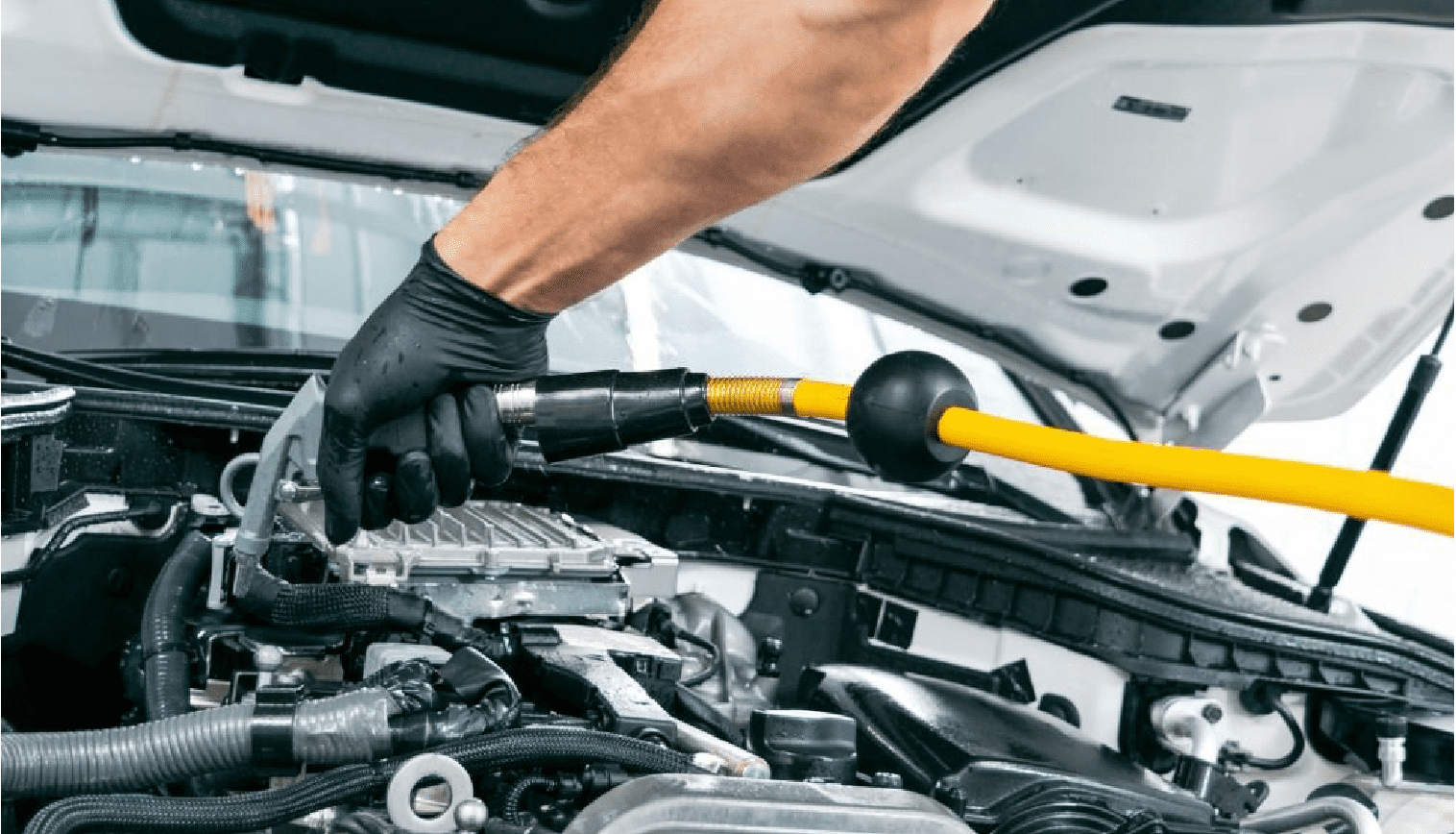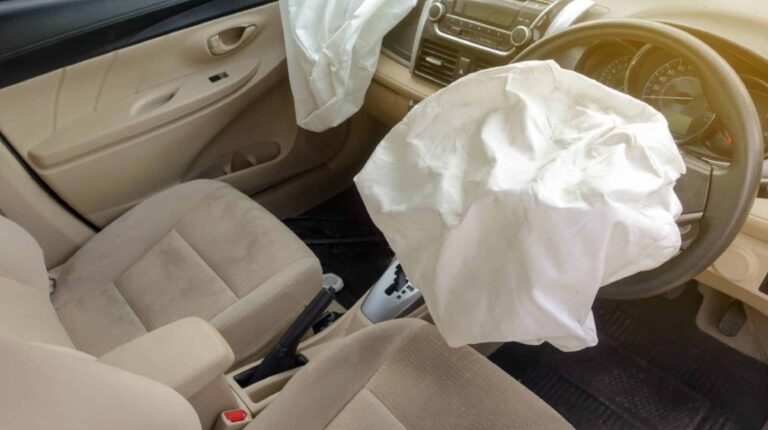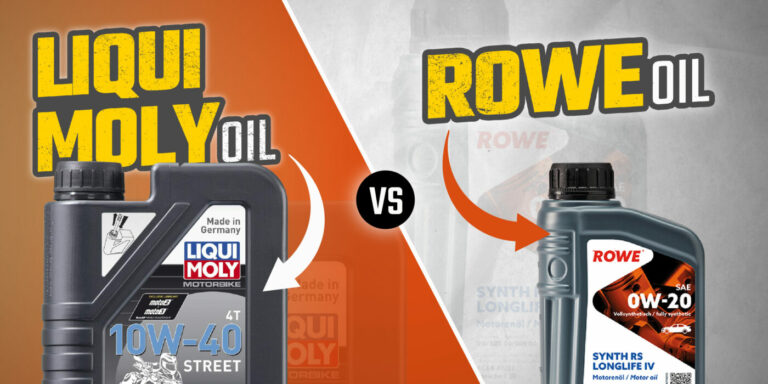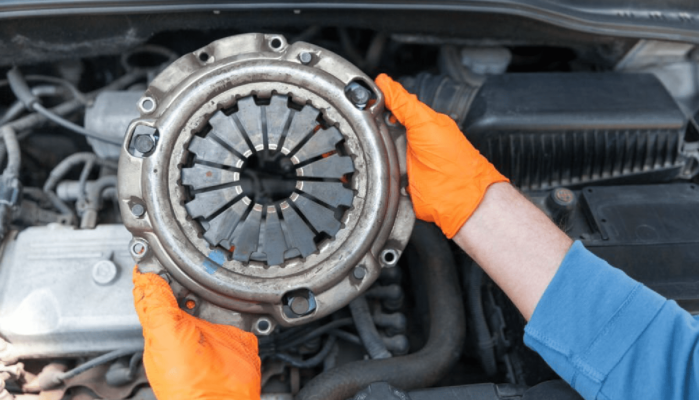
Having a car that is all cleaned up and shiny adds a feel-good factor to your day. Your car should look good driving down the road as well as parked on your driveway.
However, it’s not just the exterior that needs to be clean. Have a look under the hood and you will see that it is filled with dirt and grime. The engine bay, as it is also known as, may not be exposed to the weather, but dust can creep in from the sides and from underneath the car, especially if you drive on unpaved roads.
It is not an easy task to clean the engine bay. There are many water sensitive, electrical components that cannot be soaked in water, for example, the spark plugs and alternator. These parts are water resistant to a certain extent, although you cannot use a high-pressure water jet to clean them.
When having the car serviced, the exterior and internals are usually taken care of, but the engine bay rarely gets a makeover. The engine bay often gets neglected in the process. There are some good reasons to pay attention to cleaning under the hood. Not only does it look good, it makes maintenance easier. Imagine handling a grimy surface when checking the engine oil, transmission fluid or power steering oil.
Why should you clean the engine bay?
When the engine bay is clean, scheduled maintenance jobs like checking fluid levels are made easier. The engine bay can be left exposed to dirt and oil while driving. Exposed components in the engine can degrade over time. Metal parts may get corroded due to exposure to moisture, and rubbers / plastics may become brittle and fall off.
If you have a clean engine bay, it is easier to spot leaks, damaged parts and components that are exposed to wear and tear.
The engine bay should be cleaned approximately every 3-6 months. The first time you clean under the hood can be a tiresome process, but thereafter it is quite easy to keep it clean.
Cleaning the engine bay
Whenever doing any maintenance job, it is good to have the tools and supplies close at hand. Use a set of gloves and goggles to protect yourself.
You will need the following items:
- Soapy water in a spray bottle
- Vacuum cleaner
- A set of brushes
- Pressure washer
- Microfibre towels
- Interior plastic finisher
- Cling film or garbage bags to cover water sensitive parts
First, get rid of all the plastic engine covers and hood soundproofing and heat resistant materials. These parts can be cleaned separately after removing them from the car. Disconnect the battery and take it out of the engine bay. You don’t want to short circuit any electrical component in the engine.
Any exposed electrical components should be covered with cling film plastic or garbage bags. This will prevent these water sensitive components from getting soaked when using the pressure washer. A word of caution, keep the engine switched off when touching electrical equipment under the hood.
Take a clean brush andproceed to agitate the accumulated dust in the engine bay. Work in an orderly fashion and use the vacuum cleaner to suck up any dirt that comes loose. This should uncover at least half of the dirt in the engine bay. Make use of the microfibre cloth to dry wipe any grime or oil on the engine parts.
Next, use the pressure washer on the engine bay. Do not use a high-pressure water setting because we don’t want to get any water-sensitive parts soaked. Use a low pressure setting and evenly apply water all over the engine bay.
Use the pressure washer on the inner wings and the firewall as well. Try to get the dirt loosened as much as possible before adding the soapy water solution. You can even use a commercial degreaser, but soapy water works well because it is less likely to damage any parts in the engine.
It is best to carry out the cleaning process when the engine is cool so as to prevent the hot engine parts from burning you. Also, spraying water on hot engine parts may cause them to contract quickly and break. Ensure that the car has been left idle for some time before you start working on it.
Getting rid of grease in the engine bay
When using thedegreaser, make sure that it is not sprayed onto the paint work or any body parts. If you are using a soapy water solution, it may not cause damage to the paint work, but an industrial strength degreaser may strip the wax or ceramic coating that has been applied to the paint.
Spray the soapy watersolution on the engine block, air filter and all the other parts that look like they have a layer of oil and grime on them. Allow the degreaser to settle for a few minutes so that it can work on dissolving the dirt.
Now use the brushes to gently scrub the surface to agitate the dirt and remove it from the engine parts. You can use a toothbrush for those hard-to-reach areas such as underneath wires and near the spark plugs and high-tension leads. A good scrub with a brush should get most of the dirt out without much effort. The areas that are inaccessible can be cleaned with a brush having a longhandle.
At this point you can even jack the car up on ramps so that you can inspect the extent of the dirt from underneath the car. Just as you would do with an oil change, get underneath the car and clean off any dirt you can reach with the brush.
Rinse the dirt away from the engine bay using the pressure washer. You can make use of the soapy water solution to degrease any parts you have missed. A microfibre cloth can be used to wipe away the soapy water solution along with the grime hiding underneath it.
You can use the pressure washer again to rinse off all the dirt, if you are not satisfied with the first wash. Again, dry off all the parts using a microfibre towel.
Now that the washing process is over you can dry the engine off in two ways. One is to let it air dry by keeping the hood open, or you can use microfiber towels to wipe off any excess water from the engine bay. You can even start the engine, and allow its own heat to dry out the engine bay. If you have access to a compressed air gun, it can be used to remove water that has accumulated in hard-to-reach areas.
Rubber and plastics – get them to shine
If you want your engine bay to sparkle like the rest of your car, then make use of a plastic and rubber dressing compound. It will make the black parts of the engine bay look new by restoring their former new look and shine. Always use a rubber and plastic dresser that can withstand high heat, otherwise they may end up with a white residue as the engine heats up.
Wax and polishes canalso be used to get the plastics to shine, and keep them flexible in order to prevent cracking.
Finally, you can buff the whole area with a dry microfiber cloth for that long lasting glow.
Frequently Asked Questions
Q1. Is it ok to clean the engine bay?
Ans. It is fine to clean the engine bay, and it is a recommended practice to regularly keep the engine bay clean. Just like the rest of the car, having a clean engine bay means it is easier to do maintenance work on a clean surface. Mechanics also prefer working in a clean area and it is easier to spot oil leaks and fluid spill overs.
Q2. How should I clean the engine bay?
Ans. Make use of a degreaser like soapy solution in water. Even a degreaser like dishwashing liquid works because it fights grease efficiently. The best option is to use a purpose made engine degreaser which you can purchase from a car accessory store. There are a variety of degreasers available, so you don’t have to worry about using the right one.
Q3. Does cleaning the engine bay help the car runbetter?
Ans. Keeping the engine bay clean will not make your car run better. It is purely for aesthetic purposes. A clean engine bay looks good and easier to work on during maintenance work. Some engine components that are made from metal won’t corrode easily if you keep the dirt and oil away. Rubbers and plastics have less chance of getting brittle and breaking off.
Q4. Is engine bay detailing advisable?
Ans. Engine Bay cleaning is required for all cars, especially ones that are run on unpaved roads or through mud and puddles. Dirt and grime stick to the engine parts and cause them to get corroded easily. If you want your engine bay looking new like it did from the showroom, then it is advisable to have it cleaned and detailed.
Q5. Is it ok to use a pressure washer on the enginebay?
Ans. After using adegreaser and letting it work for a while, it is necessary to use a hose to wash off all the degreaser. Using a high-pressure washer is not advisable because it will get into the water sensitive areas of the engine and may damage them. Using a regular garden hose is fine. If all you have is a high-pressure hose, then at least use it on a low-pressure setting.
Q6. How often should the engine bay be cleaned?
Ans. Ideally, the engine bay should be cleaned every three to six months. If the car is run in a dusty environment, on unpaved roads, or the vehicle has been off roading, then you may have to clean the engine bay more often, every two months. Keeping the engine bay clean prevents the engine components from corroding or getting damaged.
Q7. How do you clean an engine bay without a professional?
Ans. First, never start with a hot engine. You may get burned by a hot engine part like the exhaust manifold or engine block. Let the engine cool down and then start working on it. Use a brush to clean any loose dirt or debris. Cover any water sensitive parts with plastic cling wrap or large garbage bags. Administer an engine degreaser on the exposed engine components and use a scrubber to take off any dirt or grease. Use a water hose to wash off the degreaser. The engine can then be wiped down with microfibre towels to absorb any excess water or degreaser. Finally, you can use a protectant wax or polish that is able to withstand heat.
Q8. Can I make my engine shine?
Ans. The best way to make your engine shine is to use high quality detailing spray. This type of spray is available at any car accessory store. Once the engine bay has been cleaned, you can spray on the detailing product to make rubber, plastics and metal parts shine. Excess liquid can be wiped away using a microfibre cloth. Sometimes the surface should be buffed to extract a better shine from it.
Q9. What precautions must be taken before detailing the engine bay?
Ans. Engine parts that have sensitive electrical components would be covered with plastic to prevent them from getting soaked with water. Avoid using a high-pressure water spray that may end up getting moisture into unwanted areas of the engine. The air intake should not be directly sprayed with water. Any exposed belts and pulleys should be covered with plastic or aluminium foil to prevent degreaser and water from getting on their surface.
Q10. How long does it take to detail an engine bay?
Ans. Detailing an engine bay is just cleaning the engine compartment and the surfaces of the engine. It is a fairly simple process and would take as much time as washing the exterior of the car. The whole process can be completed in 45 minutes to 1 hour.








